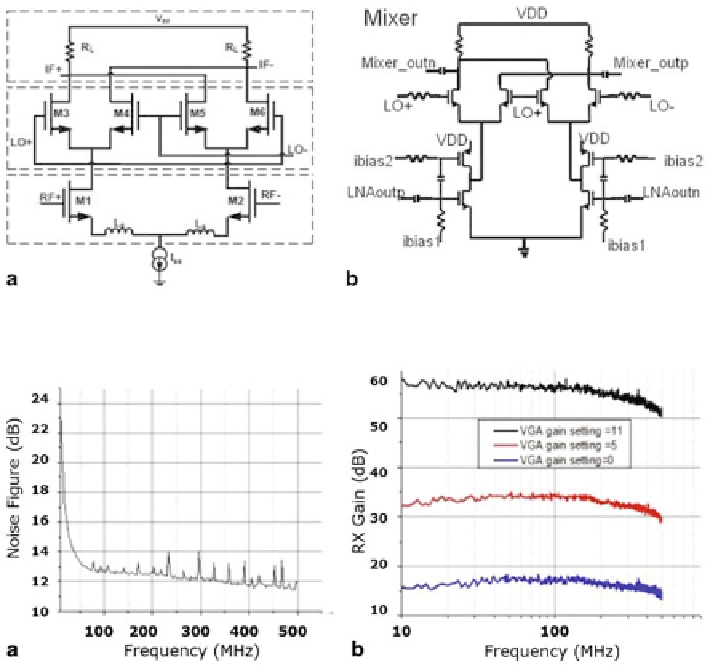Biomedical Engineering Reference
In-Depth Information
Fig. 18
Conventional
a
double balanced mixer vs.,
b
folded mixer
Fig. 19
Receiver measurement results.
a
Noise figure.
b
Conversion gain
This enables operation at a low supply voltage and provides good RF-to-IF and
LO-to-IF isolation.
The VGA [
15
] implemented in this work features low-power consumption, wide-
band operating frequency, and fast startup time behavior, dedicated for duty-cycled
UWB applications. This is achieved by using DC-coupled open-loop amplifier stages,
with fast startup mechanisms in the biasing networks and digitally controlled DC off-
set calibration. The measured gain of the VGA is from 0 to 40 dB, in steps of 5 dB and
provides 6th order Bessel filtering. The cut-off frequency is programmable between
130 and 350 MHz, depending on the width of the transmitted pulses.
The complete receiver front-end is evaluated in terms of noise figure and gain, with
the emphasis of all the measured parameters at the PCB level. This is due to the reason
that the de-embedding only reaches the point where the bonding wires touch the PCB
board. The loss due to the bonding wires and the contacts between bonding wires
and the chip/PCB are difficult to estimate. Besides, for the link evaluation, only the
PCB-level results would be relevant. As shown in Fig.
19
, the measured noise figure
is 12 dB and the maximum conversion gain is 55 dB. The total power consumption
in continuous mode is between 46 and 52 mW depending on the different gain mode.

Search WWH ::

Custom Search